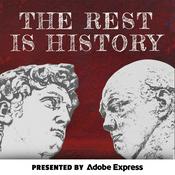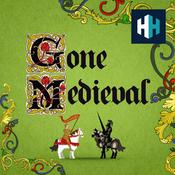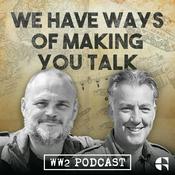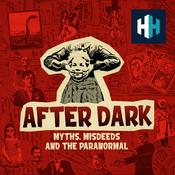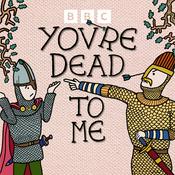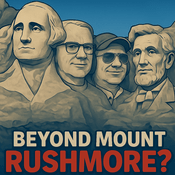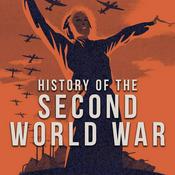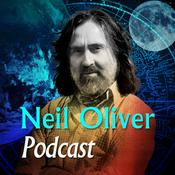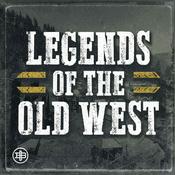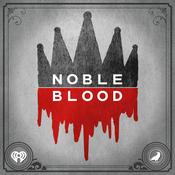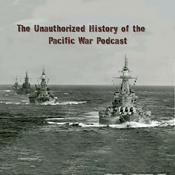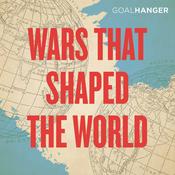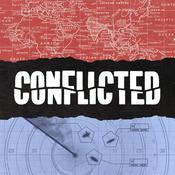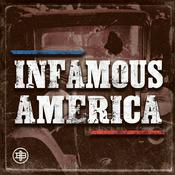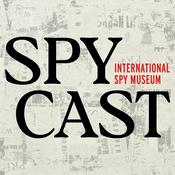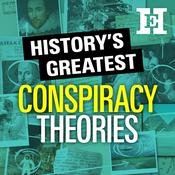1048 episodes

Manifest Destiny, Powered by Coal: How “Black Gold” Conquered the American Continent
06/1/2026 | 49 mins.
America’s growth from a rugged frontier nation to the globe’s industrial superpower in the space of 100 years can be explained by one word: coal. Before coal dominance, American buildings were defined by height limits imposed by stonework. The tallest building in the 1830s was Baltimore’s 235-foot tall Phoenix Shot Tower. Transportation also worked poorly without coal. The early wood-fired 4-4-0 locomotives struggled with top freight speeds around 15 mph and pulling trains of approximately 450 tons. The transition to coal and cheap steel enabled the steel-supported 555-foot Washington Monument and allowed massive coal-fired trains to achieve express passenger speeds up to 100+ mph and haul loads over 4,000 tons. For a century the entire world was dependent on coal. It powered railroads, built urban skylines, and provided warmth, light, and power for families rich and poor. Although the American economy soared, society unknowingly suffered from coal’s debilitating health and environmental impacts. Skies were so dirty that on some days, visibility was limited to a few feet. Coal miners frequently died from cave-ins, explosions, or contracting black lung. Towns like Centralia in Illinois were fundamentally destroyed by an underground fire started in 1962 that continues to burn. Today’s guest is Bob Wyss, author of “Black Gold: The Rise, Reign, and Fall of American Coal.” We look at a range of figures that were part of coal’s story, from a largely unknown and unrecognized Pennsylvanian inventor who helped spark the Industrial Revolution to a prominent society clubwoman who clashed with the powerful coal forces in Utah that were fouling the air and sickening residents. It also includes clashes between powerful tycoons, coal miners, and the American public.See omnystudio.com/listener for privacy information.

Ancient Athens Picked Its Leaders by Lottery for Over 200 Years. Some Think This System Should Replace Electoral Democracy
01/1/2026 | 51 mins.
For almost two centuries, Ancient Athens—the most successful democracy in history—selected citizens by lottery to fill government positions. Athens adopted sortition—a random lottery system—to select most public officials and the members of the Council of 500, a reform pioneered in 508 BC to break aristocratic control and distribute power equally among ordinary citizens. Some say it worked much better than the Assembly of Athens. In 406 BC, the Assembly rashly voted to execute all six victorious generals following a victory over Sparta because a storm prevented them from recovering the bodies of those who were lost at sea during a terrible storm. The Council of 500 later intervened by carefully reviewing the case, exposing procedural illegalities, and helping restore calmer judgment that tempered the Assembly's impulsive decision. This governing system soon disappeared from the earth. The Council of 500 was disbanded in 322 BC when Macedonian forces crushed Athens’ democracy. Rome never adopted it because its republican system favored election of magistrates and a powerful Senate of lifelong aristocrats, viewing random selection as too chaotic and unfit for a large, conquest-driven state. Athens' ancient sortition has made a modern comeback in America through randomly selected jury trials for fair justice and in new "citizens' assemblies"—which have re-emerged from Oregon to France--where ordinary people are lottery-picked to deliberate and recommend policy. Today’s guest is Terry Bourcious, author of “Democracy Without Politicians.” He is a former politician from Vermont, and he argues we should return to the Athenian model, adapted for modern governance through "multi-body sortition," where randomly selected citizen bodies, with expert staff, would draft legislation, set agendas, review proposals, and make final decisions.See omnystudio.com/listener for privacy information.

How Would Nixon Have Handled the Cuban Missile Crisis?
30/12/2025 | 28 mins.
The "Madman Theory" was Richard Nixon's foreign policy strategy during the Vietnam War era, where he deliberately cultivated an image of being unpredictable and irrational—hinting he might escalate to nuclear extremes—to intimidate adversaries like North Vietnam and the Soviet Union into concessions. Nixon instructed aides like Henry Kissinger to spread rumors that he was volatile enough to "go crazy" and use drastic measures, hoping fear of his supposed madness would deter aggression and force negotiations without actual escalation. Nixon's Madman Theory was relatively ineffective in coercing North Vietnam because Hanoi correctly gambled that the U.S. would not use nuclear force against a non-nuclear state—like North Vietnam—due to the massive domestic and international backlash, the high risk of Soviet/Chinese escalation, and the global nuclear taboo. But what if Nixon had used it against an actual nuclear power? That could have happened if history had only played out a little differently. JFK won his presidential election in 1960 against Nixon by a few thousand votes in key counties, and many suspected voter fraud. What if Nixon had won? And what if he used the Madman Doctrine against the Soviets in the Cuban Missile Crisis? In today’s episode, were’ joined by Harvy Simon, who wrote a book of alternate history called “The Madman Theory” that imagines exactly that scenario. The book focuses on how President Nixon handles the Cuban Missile Crisis. True to the "Madman" strategy, Nixon maneuvers the U.S., the Soviet Union, and the world to the brink of nuclear war, believing his reputation for unpredictability will force Nikita Khrushchev to back down. We explore the dangers of deliberately appearing irrational and unstable to an adversary—especially in the nuclear age—significantly increases the risk of miscalculation, accidental escalation, or the adversary failing to understand the bluff, thereby triggering an actual catastrophic conflict. Harvey Simon --- I’m the author of The Madman Theory, which posits that Richard Nixon won the 1960 election against Kennedy. In particular, it focuses on the Cuban missile crisis, and what would have happened differently with Nixon as president.My book is being reissued with a newly added foreword examining how Nixon’s madman theory has been taken up by President Trump.If you'd be interested in a show about what would likely have happened during the Cuban Missile Crisis if Kennedy hadn't won--some scholars doubt the outcome was legitimate--I'd be happy to talk with you about my analysis, and, more generally, how counterfactuals can improve our understanding of history.I'm a former national security analyst with Harvard University's Kennedy School of Government and have also worked as a journalist. See omnystudio.com/listener for privacy information.

Diogenes, the Father of Ancient Greek Stoicism, Loving Trolling His Audience and Could Out-Shock Borat
25/12/2025 | 49 mins.
The famous street artist Banksy shocked the art world in 2018 when his painting, Girl with Balloon, partially shredded itself moments after selling it for over a million dollars. at a Sotheby's auction in London. Banksy had secretly built a mechanical shredder into the painting's ornate frame, turning the destruction into a piece of performance art which was later authenticated and renamed Love Is in the Bin. He did this to make a statement about the art market's hyper-commercialization. One of the most famous and influential philosophers of the ancient world enjoyed doing similar types of shocking stunts to make his point in the most memorable way possible. Diogenes the Cynic had a reputation for eccentricity. He lived in a large clay wine jar and owned almost nothing, a demonstration that true freedom and happiness come from self-sufficiency. He defecated in public, and when criticized, he asked why it was acceptable to eat there but not to perform other natural acts, illustrating that social shame is arbitrary and not rooted in nature or reason. Since his death in 323 BC, devoted followers made him and his ideas famous the world over. But some modern philosophers like Friedrich Hegel thought of him as just a shock jock. To him, Diogenes had a way of life based on simple, isolated maxims and provocative anecdotes—like those of a folk figure—rather than a fully developed, systematic philosophical system that truly captured the evolving spirit of reason in history. Today’s guest is Inger Kuin, author of “Diogenes: The Rebellious Life and Revolutionary Philosophy of the Original Cynic.“ We look at this iconoclastic philosopher whose brash and free-thinking vision of life ended up inspiring the philosophy of Stoicism. His philosophy stresses the importance of living here and now and not concerning ourselves with things out of our control. Diogenes also stands apart as history’s first recorded critic of slavery, a lone voice of his time that powerfully influenced future thinkers, from Epictetus to future abolitionists.See omnystudio.com/listener for privacy information.

Blown Off Course: How History’s Windy Turning Points Sank the Armada and Saved Japan from the Mongols
23/12/2025 | 46 mins.
The greatest energy source for civilization before the steam engine was wind. It powered the global economy in the Age of Sail. Wind-powered sail ships made global shipping fast and cheap by harnessing free, reliable ocean winds to propel large cargo loads over vast distances without needing fuel or frequent stops. It also powered windmills, the factories of the Middle Ages and Renaissance. Windmills allowed for abundant bread by milling flour by turning heavy grindstones with wind-driven sails. They also powered trip hammers to forge iron and steel by lifting and dropping massive weights. We can credit them as well for pumped water, sawed timber, and processed oils, spices, and paper. Wind is one of most elemental yet overlooked forces shaping our world today, and it is at the center of the human story. Many times it changed history – such as “Protestant Wind” saving England from the Spanish Armada, kamikaze winds halting the Mongol invasions of Japan, and easterlies carrying Chernobyl’s fallout. Wind also powers massive turbines today, but there was a forgotten moment in the 1880s when we could’ve chosen wind power over fossil fuels. It even creates certain types of civilizations. Some historians believe the cleverest and most civilized people lived in places where weather was varied and posed constant challenges. Today’s guest is Simon Winchester, author of “The Breath of the Gods: The History and Future of the Wind.” We look at how wind—life‐giving and destructive, chaotic and harnessable — has shaped civilization from antiquity to today.See omnystudio.com/listener for privacy information.
More History podcasts
Trending History podcasts
About History Unplugged Podcast
Listen to History Unplugged Podcast, Journey Through Time and many other podcasts from around the world with the radio.net app

Get the free radio.net app
- Stations and podcasts to bookmark
- Stream via Wi-Fi or Bluetooth
- Supports Carplay & Android Auto
- Many other app features
Get the free radio.net app
- Stations and podcasts to bookmark
- Stream via Wi-Fi or Bluetooth
- Supports Carplay & Android Auto
- Many other app features


History Unplugged Podcast
download the app,
start listening.


